Recommended
Categories
Reprinted Articles
10 Top Reasons You Should Learn to Play 'Chord' Piano |
|---|
| by Duane Shinn |
|
There are roughly umpteen zillion reasons why you should learn enough chords to be able to "chord a song" at the piano. By "chord a song", I mean the ability to play 3 or 4 chords on the piano in some sort of rhythm while you or someone else sings the tune. To do this, you don't need to be a Van Cliburn; all you need to do is learn a few basic chords and be able to more back and forth between them in some organized rhythmic pattern. For example, did you realize that all of these songs (and hundreds more) can be sung or played with just 3 chords? Auld Lang Syne Amazing Grace Kum Ba Ya Silent Night Joy To The World Jingle Bells Happy Birthday Down In The Valley On Top Of Old Smoky... and hundreds or maybe thousands more! Add just one more chord to the basic 3, and you can play another thousand songs or so. So why not learn a few chords and start your chording career? Here are my top 10 reasons for learning "chord piano": 1) It's easy. Learn 3 chords and start in. 2) Even though it's easy to get started, you don't have to stop there. You can learn more and more chords and more rhythm patterns and get really good. 3) You'll be able to play "Happy Birthday" while the gang sings it. 4) You'll be able to play half-a-dozen Christmas carols. In case you haven't noticed, Christmas comes every year, so every year you'll get better as you participate in family gatherings. 5) You can help your kids learn to play the piano, guitar, or most any other instrument by learning chords. Most teachers don't teach chords, so you'll be giving your kids an advantage by learning chords. 6) People will admire you. It's true. Musicians are popular. Anyone who can play anything is in demand at parties and social gatherings. And if you can "chord" while others sing, you're bound to be popular. 7) Piano playing using chords is good for your brain. Studies have shown that people who actively participate in music do their brain lots of good. And since chords require 3 or 4 notes at a time instead of one, you are giving your brain a good workout. 8) Piano playing, particularly using chords, is good exercise for your wrists and fingers. (Take the time to learn about correct hand position, though!) 9) Piano playing is excellent therapy for the stress of life. Many professional people come home from a hard days work and relax by expressing their emotions on the keyboard. Play a few dark and angry chords, and you'll be surprised how much better you feel! 10) Piano playing is a blast. It's just plain old fun. So learn 3 or 4 chords and get going. Maybe you'll stop there and enjoy it the rest of your life. But just maybe you'll love it so much that you keep going and turn yourself into an excellent piano player who can read music as well as play chords! About The AuthorDuane Shinn is the author of the book-CD-DVD course titled "How To Play Chord Piano In Ten Days!" which has sold over 100,000 copies around the world and can be found at http://www.chordpiano.com/piano-chords.duane@playpiano.com |
Recommended Stuff
Beginner Piano:
| Learn Songs - Learn 3 Easy Songs, free Virtual Piano provided |
| Chords - Learn how to construct Major Chords, Primary Chords & more |
| Music Theory - Key Signatures, Major Scales, Intervals & more |
| Improvisation - Chord Inversions, and different Chord Patterns |
| Techniques - Pentatonic Scale, Whole Tone Scale, Arpeggio |
Free Piano Reference
Music Terms Glossary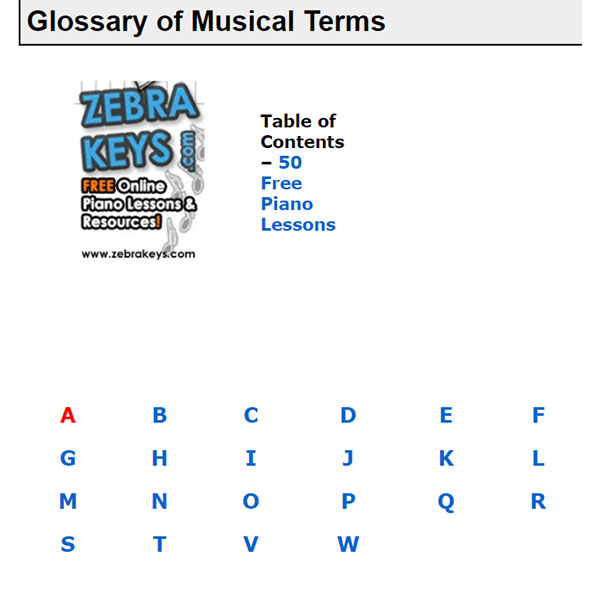 |
FIND any CHORDS using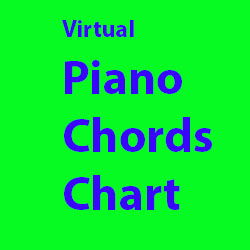 |
Music Notation Chart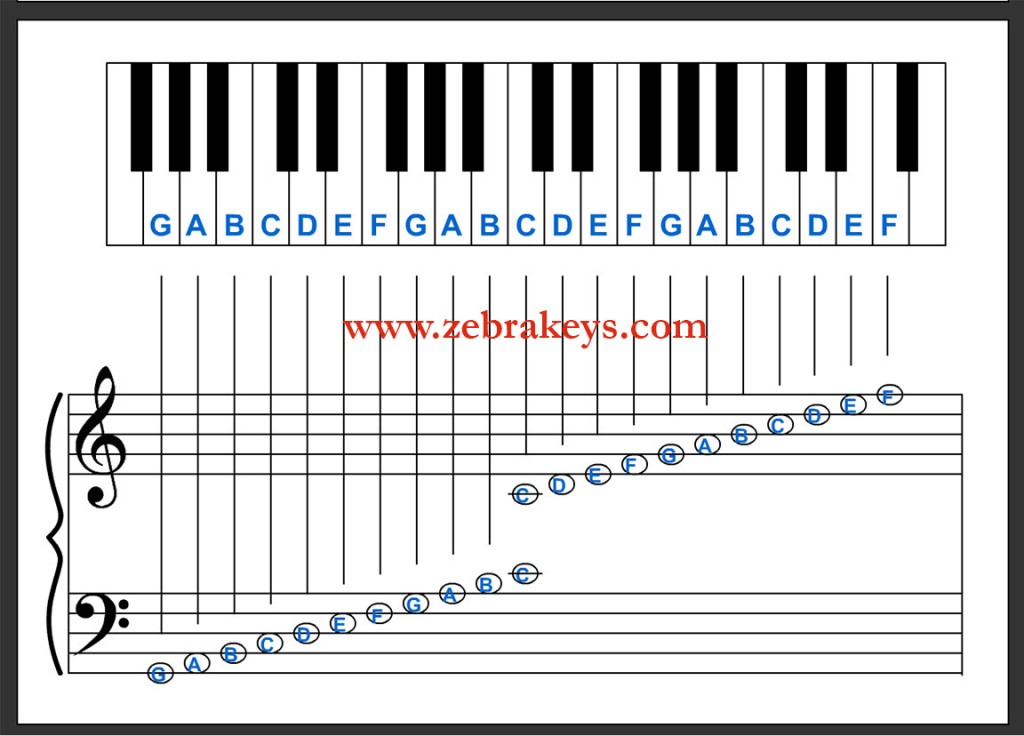 |
| TRANSLATE this content |
| Beginner Piano | | | Intermediate Piano | | | Advanced Piano |
|
List of 50 Free Lessons
Piano Basics 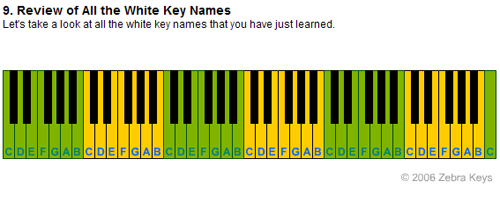 Lesson 1 - Patterns of Piano Keyboard Lesson 2 - Names of White Keys Lesson 3 - Names of Black Keys Lesson 4 - Grand Staff Lesson 5 - Note Durations |
Use our free Virtual Piano Keyboard in conjunction with these free lessons:
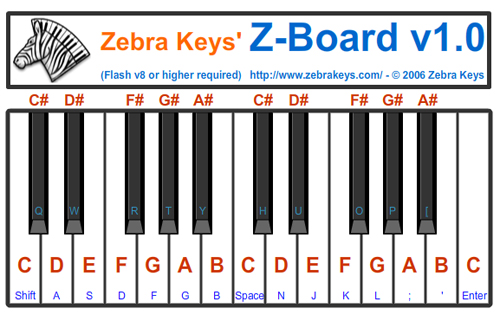 |
|
Beginner Piano Lesson 6 - Brother John Lesson 7 - London Bridge Is Falling Down Lesson 8 - Twinkle Twinkle Little Star |
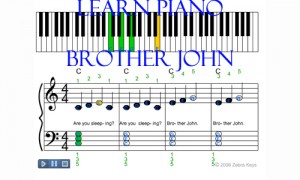 |
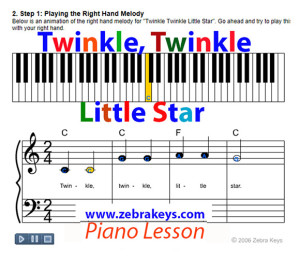 |
| Lesson 9 - Major Chord |
|
FIND any CHORDS using Free Virtual Piano Chord Chart 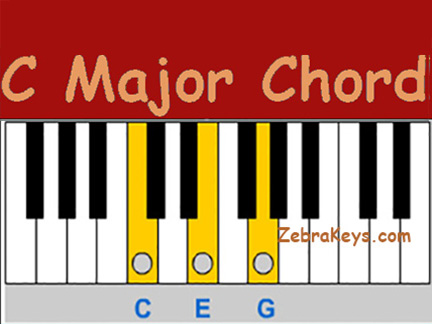 |
|
Lesson 10 - Three Primary Chords Lesson 11 - 12 Bar Blues Chord Progression |
| Lesson 12 - 12 Keys of Music |
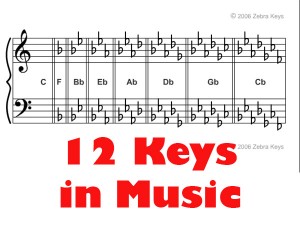 |
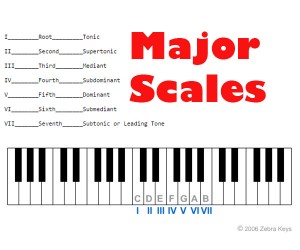 |
|
Lesson 13 - Major Scale
Lesson 14 - Musical Intervals Lesson 15 - Chords of the Major Scale Lesson 16 - The Circle of Fifths |
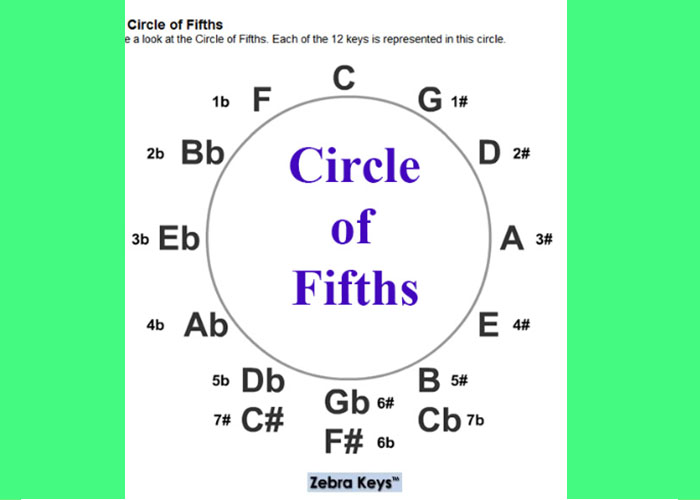 |
|
Lesson 17 - Chord Inversions Lesson 18 - Double Chord Pattern Lesson 19 - Broken Chord Pattern Lesson 20 - Arpeggio Chord Pattern Lesson 21 - Sounds of the Orient (Pentatonic Scale) Lesson 22 - Mysterious Sounds (Whole Tone Scale) Lesson 23 - Arpeggios |
|
Intermediate Piano Lesson 24 - America (My Country Tis of Thee) Lesson 25 - Silent Night Lesson 26 - God Rest Ye Merry Gentlemen |
|
Lesson 27 - Minor Chord Lesson 28 - Three Secondary Chords Lesson 29 - Dominant 7th Chord Lesson 30 - Major 7th Chord Lesson 31 - Minor 7th Chord Lesson 32 - Natural Minor Scale Lesson 33 - Chords of the Natural Minor Scale |
|
Lesson 34 - Melody as Octaves Lesson 35 - Root Chord Pattern Lesson 36 - Harmony Notes Lesson 37 - Major Chord Inversions Lesson 38 - Chord Inversion Straddles |
|
Advanced Piano Lesson 39 - The First Noel (Flash demo version) Lesson 40 - Auld Lang Syne Lesson 41 - Hark! The Herald Angels Sing |
|
Lesson 42 - Diminished Chord Lesson 43 - Augmented Chord Lesson 44 - 6th Chords Lesson 45 - Sus2 Chords Lesson 46 - Sus4 Chords Lesson 47 - Major 9th Chords Lesson 48 - Major 11th Chords Lesson 49 - Major 13th Chords Lesson 51 - Blues Scale |






